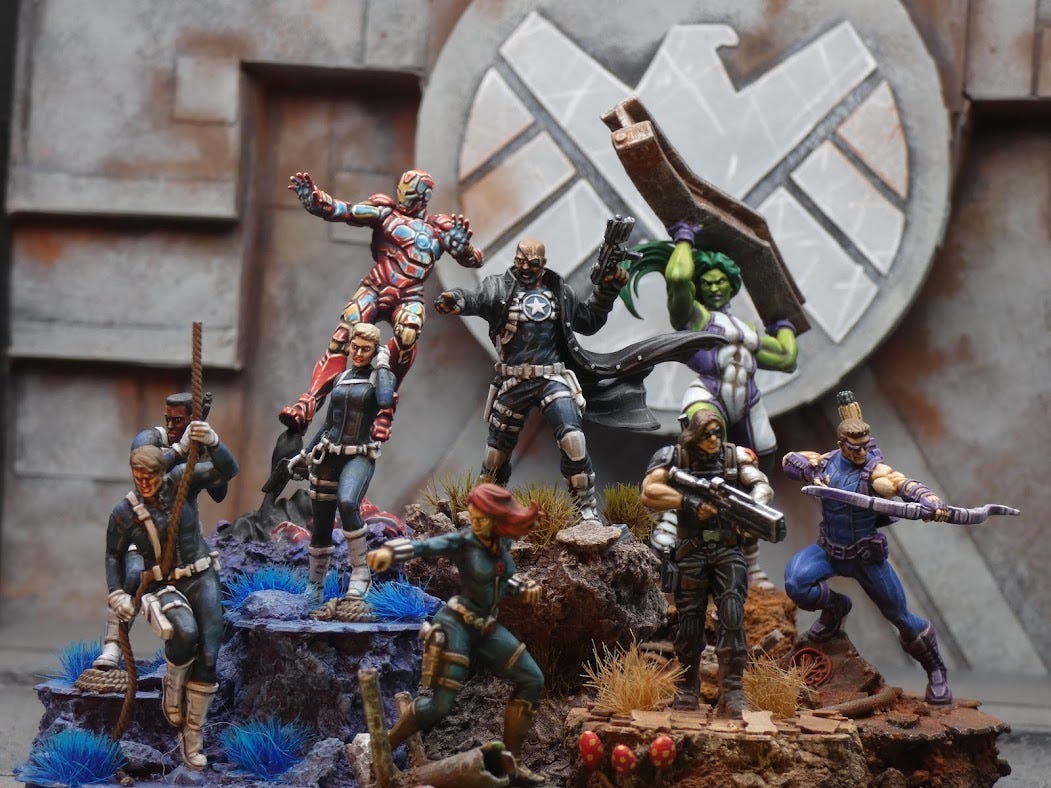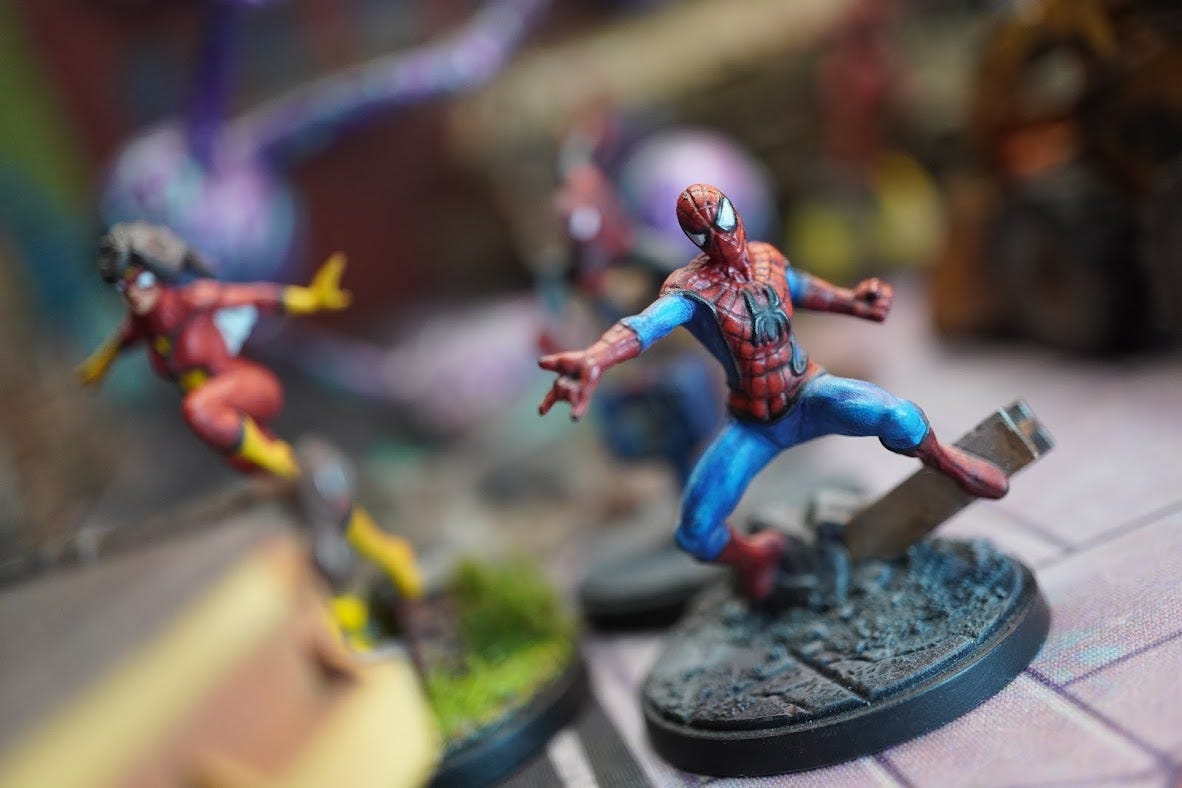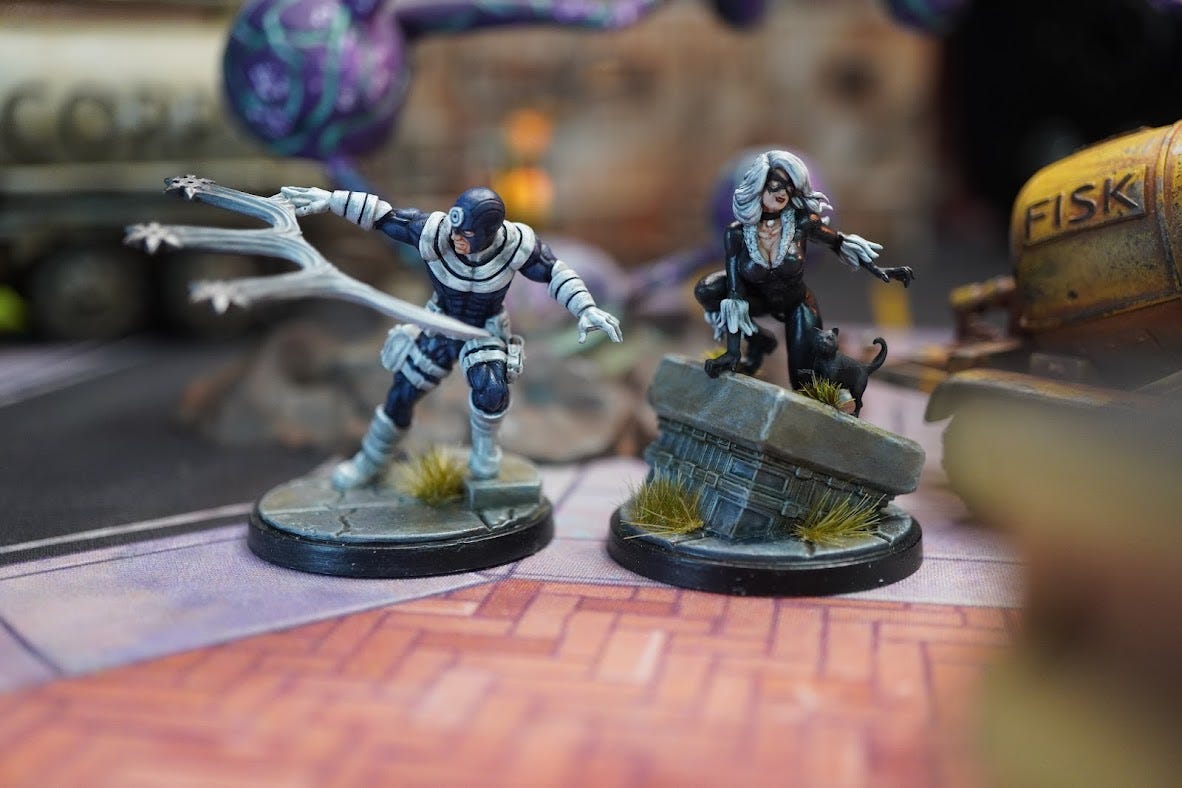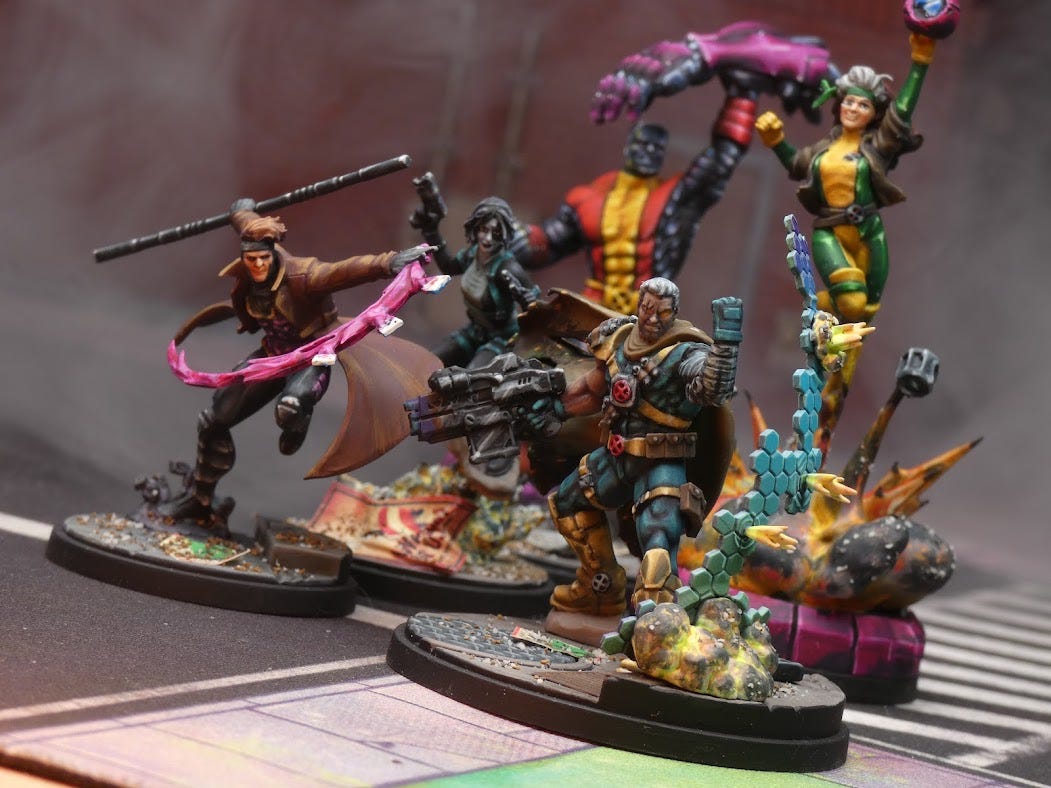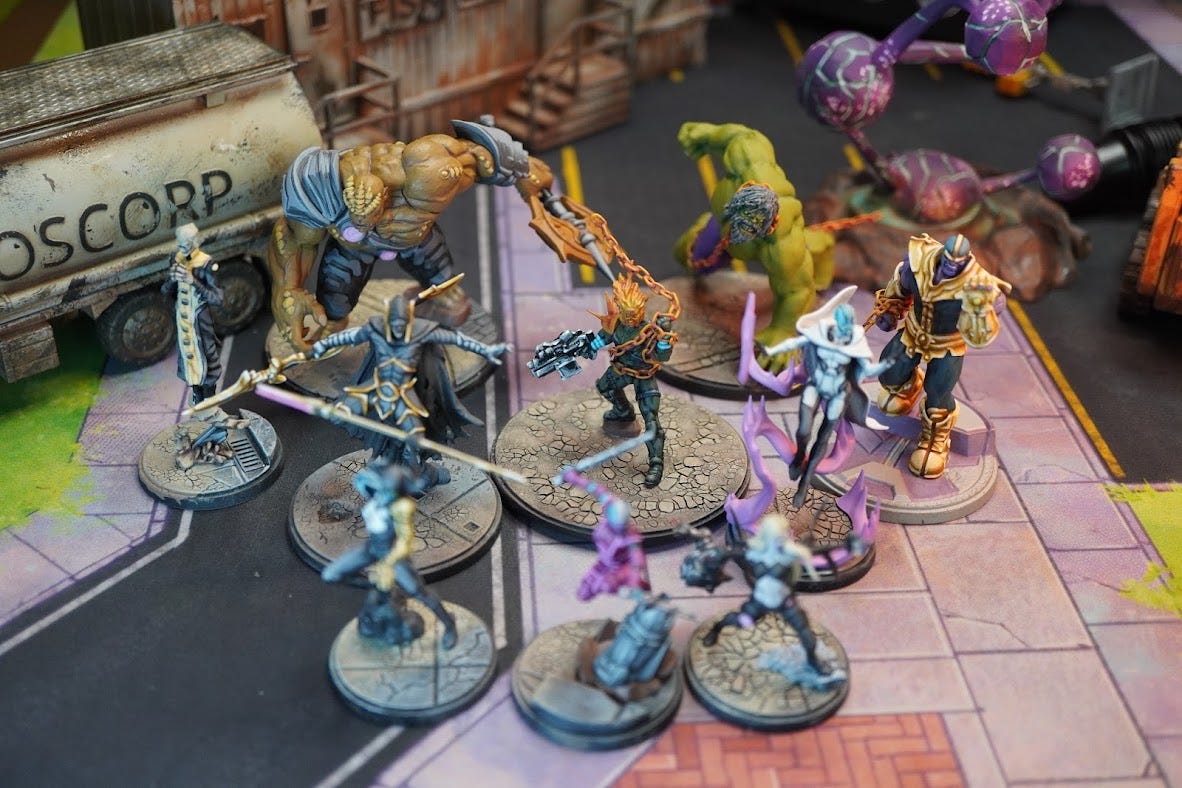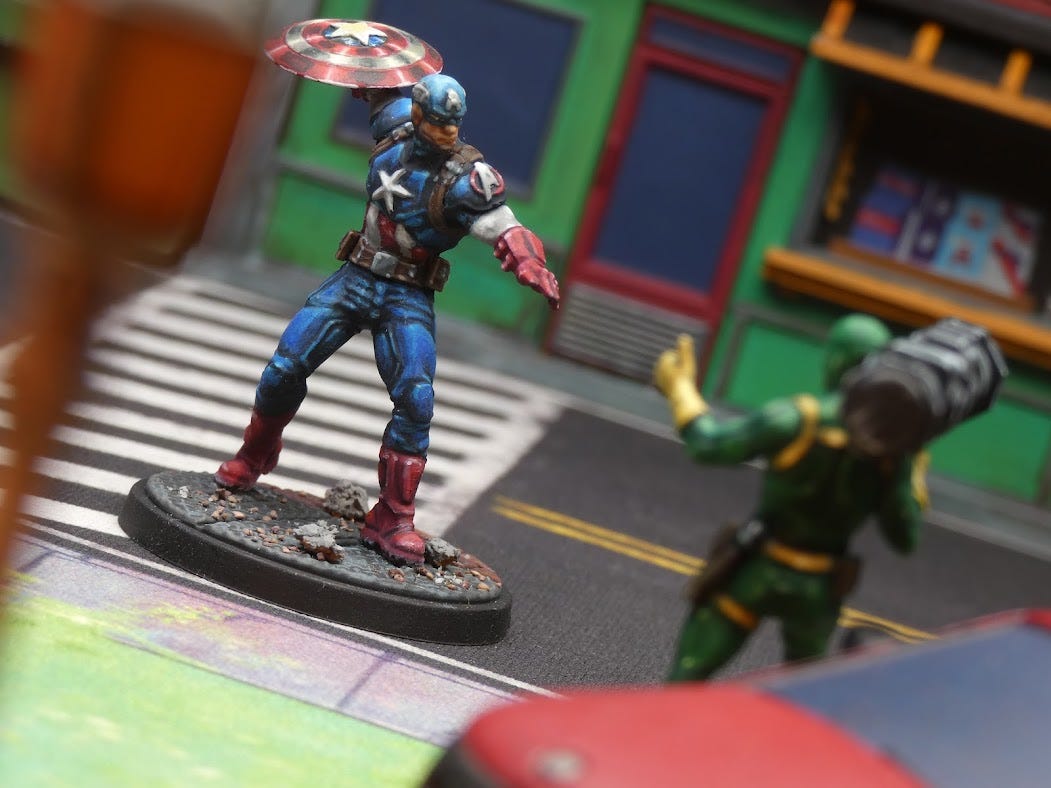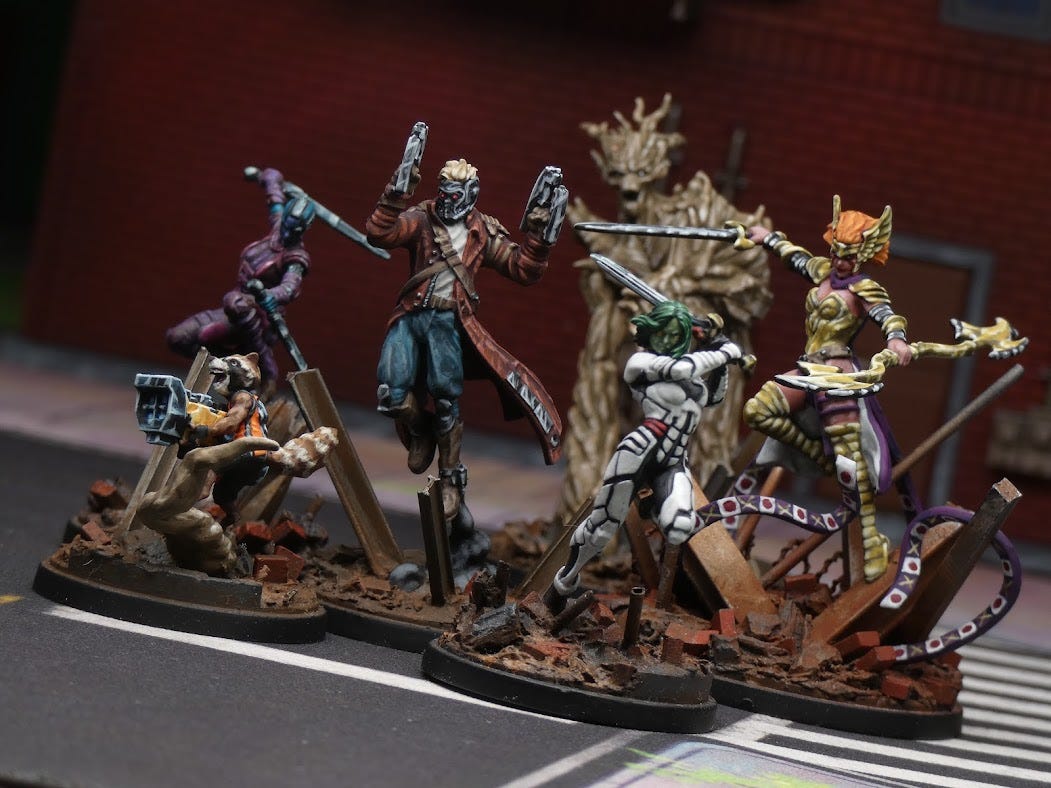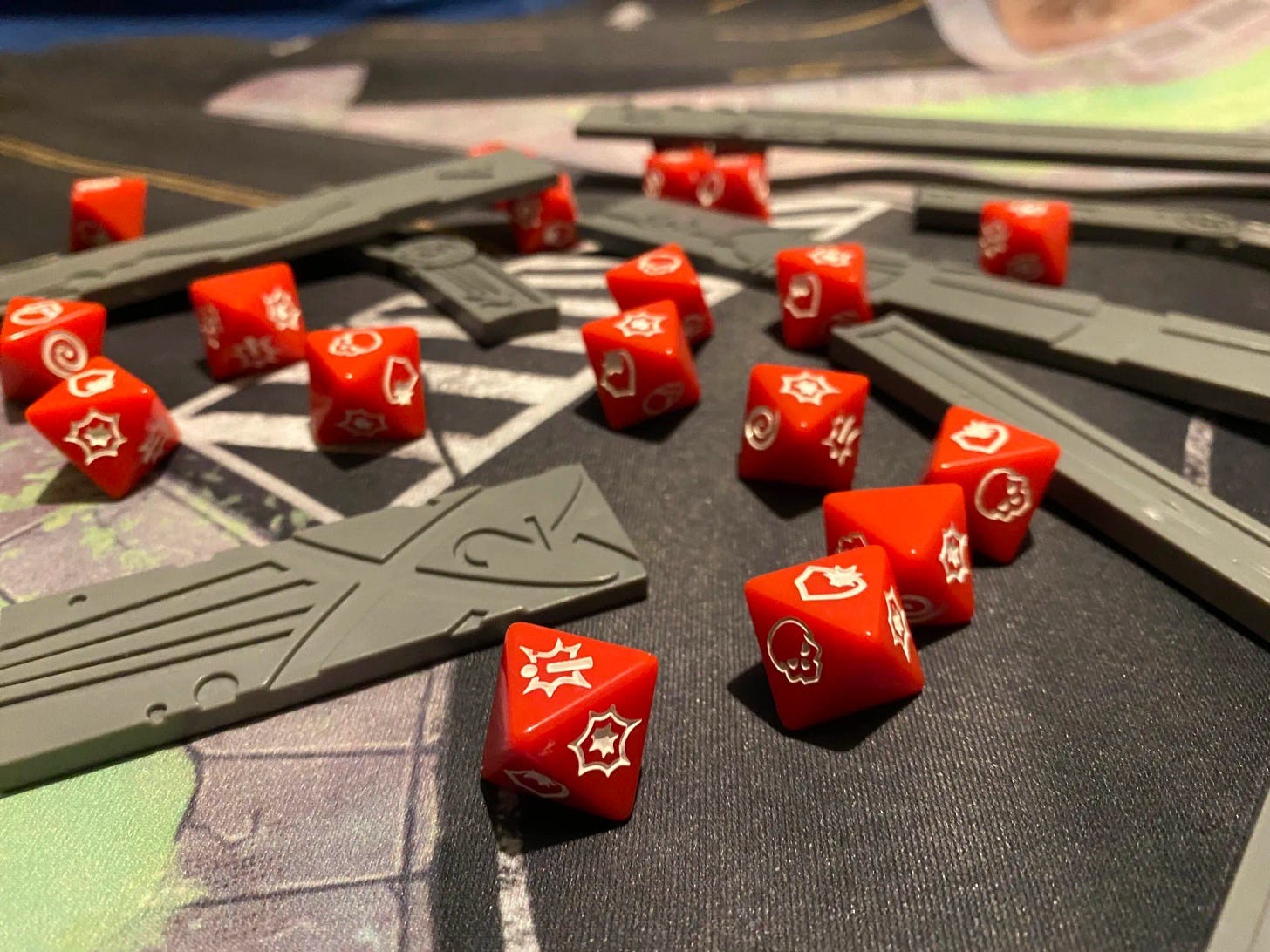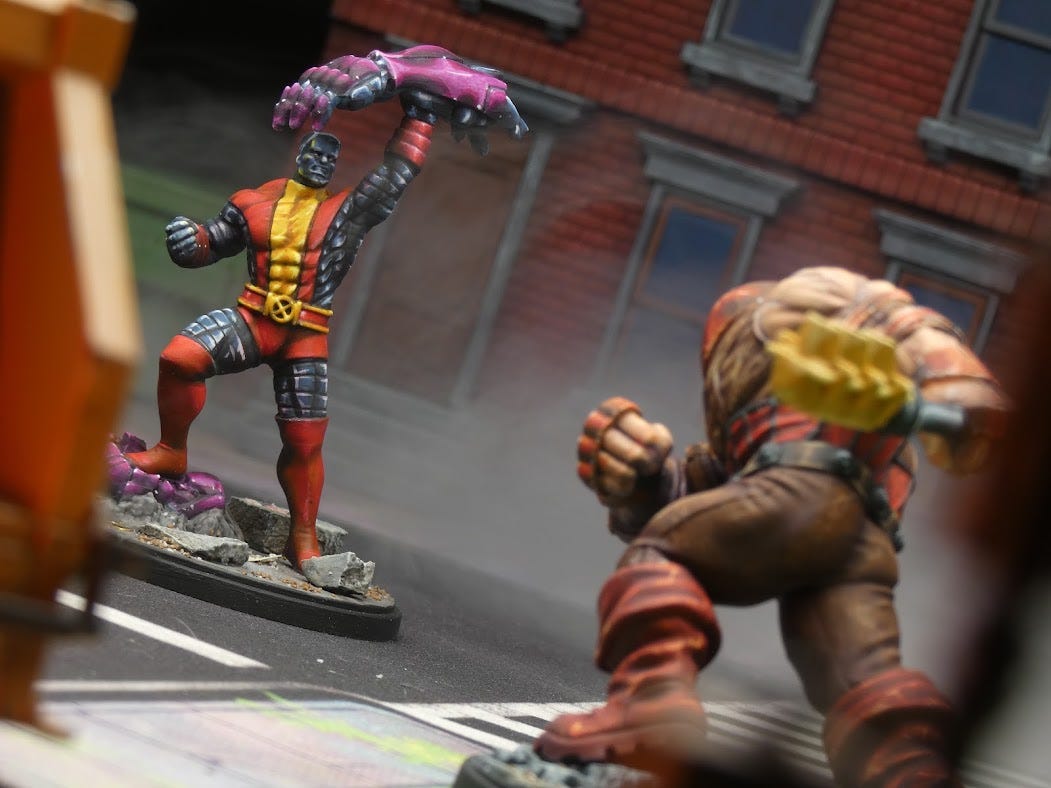Several tabletop gaming communities I engage with enjoy playing Marvel Crisis Protocol, a tactical skirmish miniatures game. Players select squads comprising their favourite Marvel characters and use them to fight over an interactive battlefield to be the first to complete their mission objectives.
Recently there has been a lot of chatter about the growing popularity of the game and speculation about what might come next. I gathered my questions, with a lot of support from the Mini Myths crew, and reached out to Atomic Mass Games to learn more.
And what do you know? They responded!
Will Shick is a Studio Head at Atomic Mass Games and Designer of Marvel Crisis Protocol. His team’s mission from the outset was to bring the excitement and narrative drama of the Marvel Universe to the tabletop. From what I can tell I think they’ve exceeded expectations.
“I’ve been an avid Marvel fan since I was six years old and my mum bought me some VHS tapes of Spider-Man and His Amazing Friends. The thing that always kept me coming back, hungry for more was not just the fantastic Marvel characters but the incredibly rich and compelling stories those characters were a part of.
“It was this element that I really wanted to make the beating heart of Crisis Protocol, to make the game a vehicle for people to not only recreate their favourite stories and team-ups from the volumes of Marvel comics, but to create a game that let them tell their own stories with their friends that still felt as if they came right from the latest issue of Marvel comics.”
An interview with Will Shick of Atomic Mass Games
Q: Marvel Crisis Protocol (MCP) has been running since late 2019 and the game has changed dramatically over the years. Looking back, what do you think are the most impactful releases or changes to the game?
A: That’s a great question. I think the release of Ultimate Encounters was a big one with the Ultron All Will Be Metal print and play and the Thanos Infinity Gauntlet Ultimate Encounter. When we began developing Crisis Protocol we did so always with the idea of Ultimate Encounters (though at the time we just called them ‘Raids’) as a multiplayer experience that would really let us explore the iconic stories of a group of heroes trying to take on an infinitely powerful villain (or hero now as the case may be). One of the reasons I think these were so impactful to the game is that they really showed that MCP has so much more for players to explore and enjoy beyond the basic 1v1 game.
The arrival of Grunts is probably another big release that really expanded the game, bringing in a piece of the Marvel Universe that a segment of players had been asking for since the launch of the game, but doing so in a way that maintained the focus of the game as being on superpowered characters. Another reason my mind centres on Grunts as an important change was because it was really a milestone for us internally that showed how our understanding and skill at working within the sandbox of the game rules and design had grown.
I think the last one that is worth talking about is the 2023 Crisis Pack which completely revamped the original Crisis Cards. Being able to go back to such a core element of the game experience and apply years of player data and feedback, our own growth in understanding what the game needed and could be, and just inject new ideas into the game to ensure that the play experience remained the best it could be was extremely exciting. And, if I can stretch the question a little bit to the future, the 2023 Crisis Pack was just the beginning of our new approach to how Crisis Cards are created and added to the game. I’m extremely excited for everyone to see the next phase of our work with the War of Kings pack that builds on a lot of the work and knowledge that we’ve gained even since the 2023 Crisis Pack.
Q: Are there any releases you wish you could have done differently or didn't go the way you expected them to?
A: Ha ... All of them? I mean, really that is one of the best and worst things about game design and development. You spend two years working on a release and even after hundreds of games played through the playtesting process, you know that you still don’t really know anything. In the first month of a new character’s release the number of games played will be exponentially greater than anything we could accomplish ourselves. It’s always exciting to see what the community will discover and come up with each new release. It’s our job to always test the extremes, but within those is an incredible amount of potential, much of it waiting to be discovered. So ultimately, as players play and innovate and discuss strategies and tactics they almost always come up with cool ways to use characters that surprise us.
More specifically though, we do make misses from time to time. Sometimes characters come out over-tuned like Cosmic Ghost Rider or we miss a key interaction that spoiled the game like Hired Thugs. And sometimes characters just don’t quite live up to the expectations that both we and the community have for them. It’s in these instances that again, the fact that we work on a living game system is so rewarding because we can go back and through careful analysis and additional testing, make adjustments to ensure that the game is the best it can be.
Q: There have been a few key releases that have changed the game in major ways – Grunts for example, and characters like Dormammu and the Sentinels have given players more ways to play. Are there are other types or characters or mechanics you might bring to the game eventually?
A: We are always looking for cool and exciting ways to expand what is possible in MCP. The upcoming arrival of Apocalypse is a perfect example of this with his new Horseman abilities. Though it’s way too early to give any specifics, Phoenix and her mechanics are another on where we got to really do something different to bring that iconic character and her powers from panel to tabletop.
Q: MCP and Star Wars: Shatterpoint are very similar at a glance but very different in play. Are there any mechanics or lessons from one game you'd like to take to the other?
A: Given how fundamentally different MCP and Shatterpoint are at a mechanical level, I don’t really think there are any mechanics that I see being used from one to another. I think if the two games share anything between them it is our commitment and determination to translate the characters in them as accurately as possible in terms of feel and playstyle from their media origins.
Certainly, our experience with MCP character design did have some impact on how we approached developing Shatterpoint characters with regards to being able to identify what aspects of the character needed to be translated into abilities or attacks or other rules. But the way in which those things are expressed is of course quite different, with only the most basic mechanical ideas shared between the two systems (things like using dice to generate randomised outcomes, ability timing windows, etc).
On the flip side, I do think our discussions about Shatterpoint tournament formats, specifically the Premiere format which requires players bring four squads and then use all four to create their strike teams over the course of the event did have some impact on the development of the MCP Timelines format which requires players to bring multiple rosters that they must play an equal number of times over the course of the event. But again due to the dramatic differences in the games, most anything that is shared between them is usually at a high concept level.
Q: Speaking of Shatterpoint, one significant difference from MCP is the adherence to seven- or eight-model teams. Do you think it's likely we'll see options to play bigger/smaller teams in the future?
A: Anything is possible, we’re always looking for new game experiences to continue to add fun and value to players tabletops and collections. One thing we are working on for Shatterpoint is using single squad builds to allow for more multiplayer modes and experiences. We are early in development stage of those but so far, the results have been very fun. We’ve already seen how effective this approach can be in MCP with the multiplayer free for all game mode Separation Anxiety.
Larger teams, I think, come down to a question of play time and complexity. Each unit in Shatterpoint (or MCP for that matter) has quite a bit going on, with plenty of opportunities to interact with other units during play. Part of what makes skirmish games so perfect for character focused gameplay is that the lower number of minis required to play lets each one have a higher cognitive load on the player, but you still have to be very careful as a game developer about making sure you don’t ever overload players, making the game too difficult or even impossible to play due to too many rules and interactions to track. Still, it would be fun to see a bigger sized Shatterpoint or MCP game mode. Maybe that’s another one where more minds to share the load will be the key to unlocking them in the future.
Q: Both MCP and Shatterpoint are built around objective tokens – usually capturing them or picking them up. Has the team experimented with game types that don't use objective tokens? Mojo Ball, for example, is a fun departure from this system but isn't part of the 'core' competitive game.
A: We’re certainly always looking at ways to create new and interesting gameplay experiences that break the norm of the base game. Things like Mojo Ball or the very first organised play event kit we released for MCP Vibranium Heist gave a strong twist on the standard objective play of the game. One of the things we really enjoy at AMG is designing and developing games that have a strong narrative. Good stories, after all, is why we are drawn to Marvel and Star Wars in the first place. The more we can find ways to inject that narrative into the game the better we believe the game will be.
However, it’s always a fine balance to find balance. A story doesn’t have to be balanced because it bends to the whim of the storyteller. But when we come together to play games, their isn’t just one storyteller anymore. There’s two (or more depending on the game you’re playing). And to complicate matters, not only are there multiple storytellers, but each storyteller is also part of the audience for the story being told.
The point being that, the challenge of game development is always about finding that perfect balance point where two people, who may have never spoken to each other before, can come together and have this shared experience where they play out their own unique Marvel narrative on the tabletop. The base game represents where we as the creators feel the balance to achieve this consistently exists.
The exciting thing about games like MCP, is that there is a huge amount of space we can explore from that base balanced game experience, and so we are constantly looking at ways we can create new and different scenarios or game modes for players to enjoy.
Q: The MCP scene is growing in popularity across Australia. Do you have any comments to share about the MCP competitive scene in Australia? Do you think we might see a grand tournament in Victoria in the near future?
A: I think the biggest thing I have to share is always remember the golden rule, ‘The goal of the game is to win, but the point of the game is to have fun.’ The best communities I’ve ever been a part of as a player were the ones who played their best but were always most focused on having a blast with the person they were playing with across the table.
As far as seeing a GT in Victoria in the next GT season, the game dev side doesn’t handle those things, but I’ll be sure to poke the people who do make those decisions. I know that the event folks are planning on expanding the program to try and include even more communities after the overwhelming response during this inaugural GT season.
Q: Do you have any advice for new players or anyone interested in trying MCP?
A: If you’re at all interested in the game jump on in and give it a try! I know there are plenty of people already playing who would love to show you the game.
And if you aren’t entirely sure about diving completely into a core set, you can always try a couple of games with the contents of an Affiliation Pack alongside an already established player. When trying out the game for the first couple of times, you don’t have to have a full roster to choose from. Though I’ll bet after those first couple of games, you’ll be excited to start filling one out for even more options and characters you enjoy!
Q: Are there any other comments you would like to share for the Australian MCP community?
A: Thank you all so much for your support! We truly appreciate the passion and excitement and we are working on ways to better support all our Australian community!
Thanks for reading!
To learn more about MCP visit the official website.
There is also a dedicated online community via the Mini Myths Discord server for players in Victoria, Australia, and abroad.





